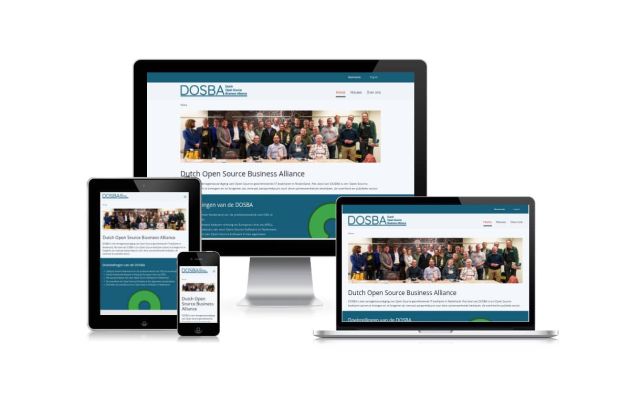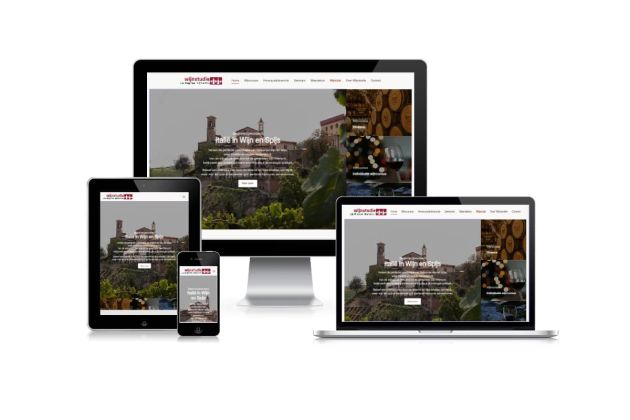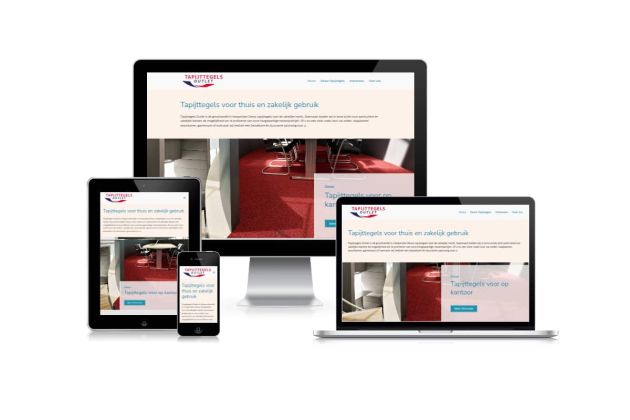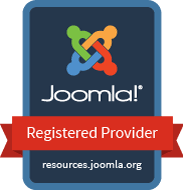
Website migration
Support for outdated software versions always ends at some point. Joomla is no exception. Recent outdated versions can usually be updated to newer versions without major issues.
But for heavily outdated versions, a full website migration is needed.
Website Migration from Joomla 3.x
The codebase of Joomla 4 and Joomla 5 has been heavily modernized. To move from Joomla 3.x to Joomla 4.x or Joomla 5, an upgrade is required.
Third-party extensions must be updated to the latest versions. Some extensions are not compatible with Joomla 4 and 5. In some cases, small adjustments are needed — especially for older extensions and templates.
Joomla 3.10.x received security updates until August 2023. Joomla 4 will be supported until October 2025.
Older Joomla Versions
Website Migration from Joomla 2.5
To move from Joomla 2.5 to Joomla 3.x, an update is needed. Joomla 1.6 and 1.7 can be updated to Joomla 3.x via Joomla 2.5.28. Some small adjustments may be necessary, especially for outdated extensions and template changes. Joomla 2.5.28 is the final version in the 2.5 series. This version has not received (security) updates since December 31, 2014.
Joomla 1.5
The program code and database structure of Joomla 1.5 are very different. It can only be migrated to Joomla 3 through a full migration process. Older Joomla versions may still work for a while — as long as your hosting provider does not upgrade the server software (like PHP). However, from a security perspective, it’s strongly recommended to keep all software up to date. Joomla 1.5.26 is the last version and has not received (security) patches since September 2012.
Joomla 1.0
Joomla 1.0 was released in 2005. Joomla 1.0.15 is the final version and has not been officially supported by Joomla since July 22, 2009.
Extensions
In addition to the Joomla core software, most Joomla websites use extensions. These 3rd party extensions can be tricky to migrate. Some have no updated versions for newer Joomla releases. db8 can support you with migrating to the latest Joomla versions.

Why migrate to a newer version?
- Fixing vulnerabilities: Older CMS versions often have known security issues that hackers can exploit. Updates and newer versions include patches that fix these problems.
- Protection against malware and hacks: Hackers usually target outdated systems. By staying up to date, you reduce the risk of attacks like SQL injections, cross-site scripting (XSS), and brute-force attacks.
- Faster loading times: New CMS versions are often optimized for better performance, which helps your website run faster and more efficiently.
- Less server load: Improved code and more efficient database queries mean the updated CMS uses fewer server resources.
- Support for new technologies: Older CMS versions may not work well with modern web technologies like newer PHP versions, database updates, and browsers.
- Plugins and themes stay compatible: Plugin and theme developers often update their software to match the latest CMS versions. An outdated CMS can cause conflicts with these updates.
- Better user experience: New CMS versions often include improved dashboards, new tools, and helpful features for both admins and users.
- Improved SEO options: Search engines often prefer websites that are up to date and perform well. New CMS versions usually include features that help with SEO.
- Protection of user data: Regular updates help your CMS comply with the latest privacy and security laws, such as the General Data Protection Regulation (GDPR).
- Avoiding legal risks: If you don’t update, your website may not meet legal requirements — which could lead to fines or legal issues.
- Longer support from developers: Older CMS versions often lose official support, so you no longer get help or security patches.
- Active community and documentation: Staying up to date means you benefit from the latest guides, forum discussions, and community solutions.
How do you migrate your website?
Joomla 5 has the following minimum server requirements:
- PHP 8.1 or higher
- MySQL 8.0.13+ or MariaDB 10.4+
- Apache 2.4+ or Nginx
- Minimum Joomla 3.10 as the starting point for migration
Check your hosting environment and ask your provider to upgrade the server software if needed.
Before starting the migration:
- Update your CMS to the latest version within your current series:
- Upgrade Joomla 3.x to version 3.10.12
- Make a full backup of your website:
- Use Akeeba Backup (a popular Joomla backup extension)
- Download the backup and store it locally
- Make sure you have a test environment to perform and test the migration before going live
- Use a test environment with the same server specifications.
- Install the backup of your Joomla 3 site on the test environment.
- Go to Components > Joomla Update. Enable the ‘Joomla Next’ update channel to see the Joomla 4 upgrade option.
- Check if your extensions (Components, Modules, Plugins, and Templates) are compatible with Joomla 4 and Joomla 5.
- Remove outdated or unsupported extensions.
- Temporarily disable system and content plugins that are not compatible.
- Templates: If you use a custom template, check if the developer offers a version for Joomla 4 and 5.
- Go to Joomla Update in the admin panel and upgrade to Joomla 4.
- After the update, test everything (especially extensions and templates):
- Clear the cache and test the site
- Do all pages load?
- Do forms and features still work?
- Has performance improved?
- Create a backup of your upgraded local site.
- Restore it to a folder on your server, for example: example.com/new/
- Test the upgraded site on the server.
- If everything works well, move the current live site to a folder like example.com/old/ and remove it later
- Go live by moving all files/folders to the main domain (example.com)
- Test the website again.
- Update server paths for tmp and logs
- Use a tool like Screaming Frog to check if old URLs still work — add redirects for broken ones
- Submit the new sitemap.xml to search engines
How we can help you migrate!
Joomla 5 requires specific server configurations. We help with:
- Checking your server environment and PHP version.
- Advice and support for server upgrades.
- Upgrading to at least Joomla 3.10 as preparation for migration.
To prevent data loss, we create a full backup of your website:
- Using Akeeba Backup or another reliable method.
- Storing backups in a secure location.
- Setting up a test environment for a safe migration process.
We install your site in a test environment to safely test the migration without affecting your live site:
- Copying your current website to a test environment.
- Preparing for the upgrade to Joomla 4 and 5.
- Enabling the ‘Joomla Next’ update channel to make Joomla 4 visible.
Not all extensions, modules, and templates are compatible with Joomla 4 and 5. We help by:
- Scanning installed extensions and templates.
- Updating or replacing outdated components.
- Temporarily disabling conflicting plugins.
After all preparations, we perform the actual upgrade:
- Upgrading to Joomla 4 and checking for errors.
- Testing features like forms and pages.
- Clearing cache and optimizing site performance.
If the test environment works well, we move the new version live:
- Backing up the upgraded test site.
- Replacing the live website with the new version.
- Removing old files and cleaning up the server.
After going live, we perform a final check to make sure everything works correctly:
- Testing the website for functionality and speed.
- Adjusting server paths for logs and temporary files.
- Checking redirects and submitting a new sitemap to search engines.
- Experience and expertise: We have extensive experience with Joomla migrations.
- Security and reliability: We ensure your data stays safe.
- SEO preservation: We make sure your search engine ranking is maintained.
- Complete guidance: From planning to go-live, we support you every step of the way.
Switching to Joomla
Would you like to switch to Joomla? Existing websites can be moved to Joomla in different ways. Sometimes, a migration is possible at the database level. In other cases, it’s a matter of manually copying and pasting. And sometimes the process can be automated.
The best method depends on whether a database is available and how many articles need to be transferred. Since 2005, db8 has helped businesses switch to Joomla by migrating websites from other systems into Joomla.
Migration at Database Level
If the current website is built with a CMS and the content is displayed on pages from a database, the best way to migrate the website is by using database queries to convert the content into a structure that Joomla CMS can use.
Manual Copy and Paste
For small websites with up to 15 pages, the easiest way to move the site to Joomla is simply to copy the text via the browser and paste it as articles into the new Joomla website.
Automated Copy and Paste
For larger websites with at least 15 pages, it can be faster to write a script that converts the website content into database records that can be used by Joomla CMS.




